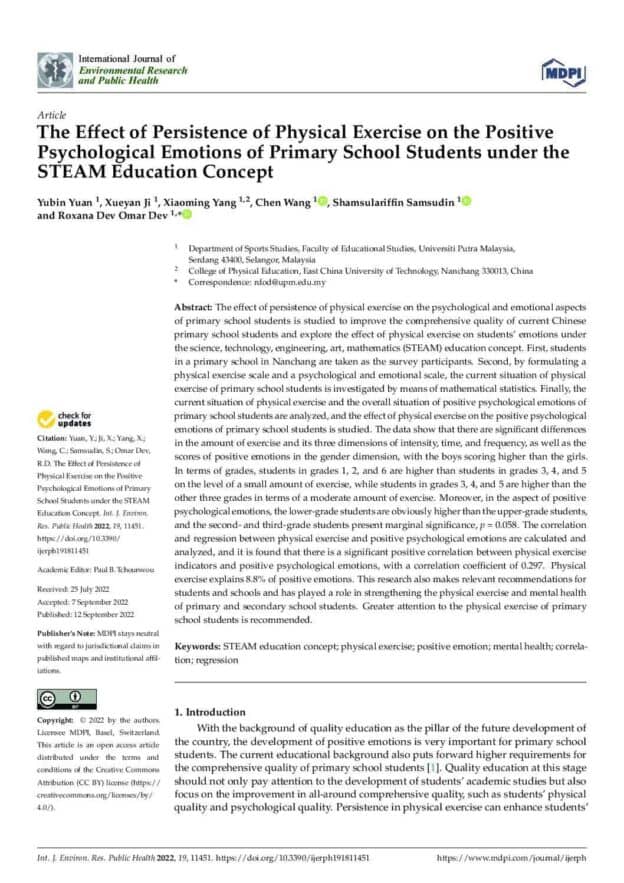Abstract
The effect of persistence of physical exercise on the psychological and emotional aspects of primary school students is studied to improve the comprehensive quality of current Chinese primary school students and explore the effect of physical exercise on students’ emotions under the science, technology, engineering, art, mathematics (STEAM) education concept. First, students in a primary school in Nanchang are taken as the survey participants. Second, by formulating a physical exercise scale and a psychological and emotional scale, the current situation of physical exercise of primary school students is investigated by means of mathematical statistics. Finally, the current situation of physical exercise and the overall situation of positive psychological emotions of primary school students are analyzed, and the effect of physical exercise on the positive psychological emotions of primary school students is studied.
The data show that there are significant differences in the amount of exercise and its three dimensions of intensity, time, and frequency, as well as the scores of positive emotions in the gender dimension, with the boys scoring higher than the girls. In terms of grades, students in grades 1, 2, and 6 are higher than students in grades 3, 4, and 5 on the level of a small amount of exercise, while students in grades 3, 4, and 5 are higher than the other three grades in terms of a moderate amount of exercise. Moreover, in the aspect of positive psychological emotions, the lower-grade students are obviously higher than the upper-grade students, and the second- and third-grade students present marginal significance, p = 0.058.
The correlation and regression between physical exercise and positive psychological emotions are calculated and analyzed, and it is found that there is a significant positive correlation between physical exercise indicators and positive psychological emotions, with a correlation coefficient of 0.297. Physical exercise explains 8.8% of positive emotions. This research also makes relevant recommendations for students and schools and has played a role in strengthening the physical exercise and mental health of primary and secondary school students. Greater attention to the physical exercise of primary school students is recommended.



Responses